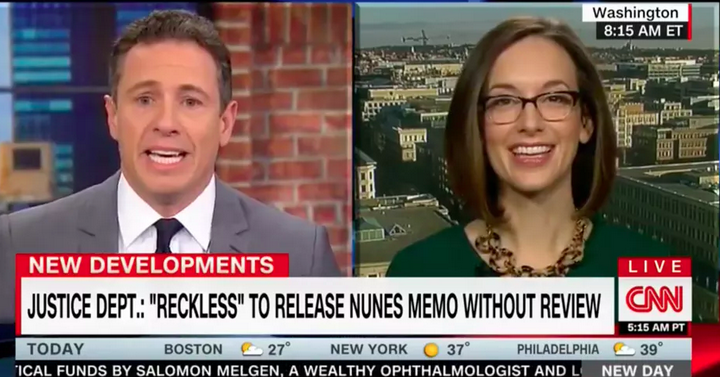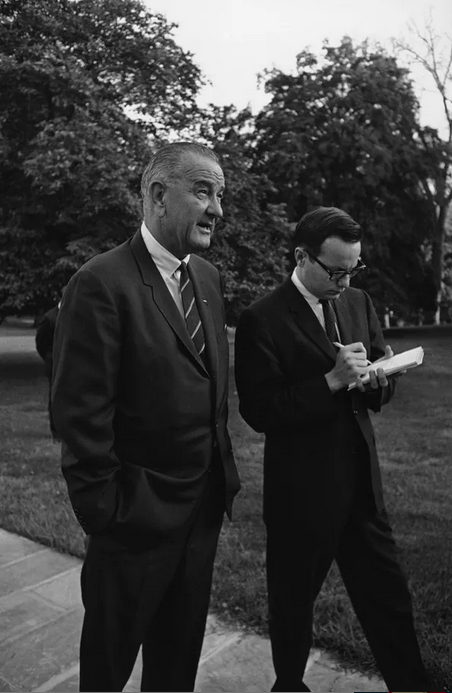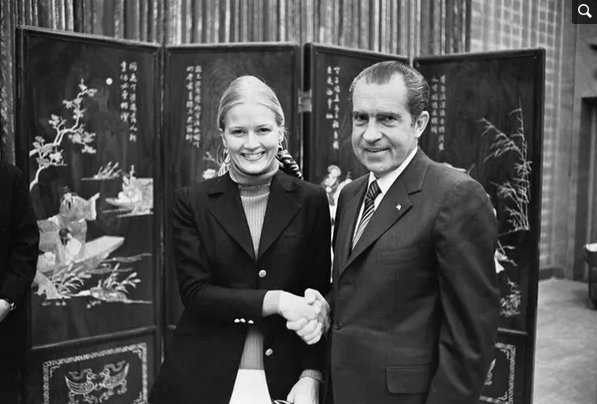By Michael Socolow/The Conversation
A common practice in American journalism has, once again, sparked outrage.
CNN recently announced the hiring of Sarah Isgur Flores to be “one of several editors” who will help “coordinate [political] coverage across TV and digital.”
Though a CNN spokesperson told Splinter that Isgur “is not leading, overseeing, or running CNN’s political coverage,” the new hire will undoubtedly influence the cable network’s coverage of the 2020 presidential election.
Isgur has no professional journalism experience. But she’s been active politically, which may have qualified her for the job.
Isgur most recently worked as the spokesperson for the Department of Justice, where she disseminated information about the department’s new policies under President Trump and Attorney General Sessions in order to inform and influence journalistic coverage.
 Sarah Isgur Flores, Justice Department spokesperson, being interviewed by CNN’s Chris Cuomo in 2018/CNN, YouTube
Sarah Isgur Flores, Justice Department spokesperson, being interviewed by CNN’s Chris Cuomo in 2018/CNN, YouTube
With a Harvard law degree, and jobs at the Republican National Committee and on numerous Republican campaigns, Isgur was a reliable purveyor of administration spin.
CNN’s hiring of Isgur immediately provoked criticism.
“Elevating an unabashed partisan to a nonpartisan role is an obvious disservice to viewers at home, who count on the network’s independence,” wrote attorney and GQ columnist Jay Willis.
Media history shows that CNN is simply repeating a time-honored journalistic hiring practice. The revolving door from the White House to mainstream journalism, and from mainstream journalism to the White House, has been used so regularly that we often forget just how common it was – and remains.
Prominent Figures
The long list of political operatives who transitioned into journalism includes such well-known figures as Bill Moyers, William Safire, Diane Sawyer and George Stephanopoulos.
Perhaps the most illuminating example of this transition is Moyers. While working as a special assistant and press secretary for President Lyndon Johnson, Moyers proved to be one of the administration’s most antagonistic tacticians in dealing with the media.
 Bill Moyers, right, was press secretary to President Lyndon Johnson/William J. Smith, AP
Bill Moyers, right, was press secretary to President Lyndon Johnson/William J. Smith, AP
In a memo he wrote about Vietnam War coverage, Moyers decried “the irresponsible and prejudiced coverage of men like Peter Arnett and Morley Safer, men who are not American and who do not have the basic American interest at heart.” Arnett was from New Zealand and Safer from Canada.
Safer, the legendary CBS News reporter, never forgave Moyers for helping the Johnson administration smear him as a Communist.
FOIA records later revealed that Moyers helped hunt for homosexuals serving in the Johnson administration in order to protect the White House from embarrassing disclosures. (Moyers has disputed that characterization.
Yet, for all of Moyers’ partisan political behavior, he would transition straight from the White House to become publisher of the Long Island newspaper Newsday in 1967. He joined CBS News in 1976.
Following in Moyers’ footsteps were several Republican political appointees.
 Journalist Diane Sawyer was previously a press aide to President Richard Nixon/Photo from Nixon’s trip to China in 1972. National Archives, White House Photo Office collection
Journalist Diane Sawyer was previously a press aide to President Richard Nixon/Photo from Nixon’s trip to China in 1972. National Archives, White House Photo Office collection
Diane Sawyer easily moved from working for Richard Nixon to a job at CBS News without much criticism. William Safire’s hiring by the New York Times as an opinion columnist in 1973 sparked a firestorm of controversy both in the newsroom and from critics.
Safire had composed the most memorable phrases uttered by Spiro Agnew in that vice president’s famous attacks on the press. Just a few years later, he would win journalism’s highest honor – the Pulitzer Prize for his commentary on the Carter administration.
But not all the revolving-door examples would be as famous as Moyers, Sawyer or Safire.
In 1997, for example, David Shipley left a position as special assistant to President Clinton to join the New York Times as deputy Op-Ed page editor.
Roger Colloff, who served in the Federal Office of Energy under President Carter, left the administration in 1979 to join CBS, where he would become a CBS News vice president with supervisory authority over all public affairs broadcasts, including 60 Minutes.
Journalistic Independence Questioned
Isgur won’t simply be a columnist (like Safire) or reporter (like Moyers or Sawyer). Both Shipley and Colloff had previous journalistic experience; Isgur doesn’t.
The danger critics identify is that Isgur, as an editor, could supervise and shape coverage in ways that might allow her evident political biases to go unchecked. (CNN characterized her authority as limited, specifically noting that Isgur “is helping to coordinate coverage across TV and Digital – she is one of several editors.”)
Yet there are historical precedents for granting far more authority to former political appointees than Isgur will have.
In 1961, James C. Hagerty moved from his position as President Eisenhower’s press secretary to vice president of news, special events and public affairs for ABC. (There’s little evidence that Hagerty’s ABC News management led to significantly more favorable coverage of Republicans, when compared to CBS News and NBC News, in this period.)
Do these historical examples demonstrating the smooth interplay between American politics and political journalism apply in the Isgur case?
Today’s context is different. Isgur comes from an administration that has vilified the press to an unmatched degree. President Trump’s rhetorical attacks on the media, which have led to several violent and criminal acts, this line of thinking goes, should therefore disqualify administration appointees from working in journalism.
There’s some truth to the idea that Trump is uniquely antagonistic towards the media. But he’s not the first high-level politician to be that way.
After more than four decades, it’s easy to forget the power and influence of Agnew’s attacks on the media during the Nixon administration. And, even before that, at the 1964 Republican convention in San Francisco, the “right-wing rage” directed toward the media shocked journalists.
Just as Safire’s defection from the Nixon administration to the New York Times raised the issue of hypocrisy, Flores’ parallel move incites many of the same questions.
Why would a Trump administration appointee even be interested in working for CNN, a journalistic outlet the president has accused of purveying “fake news?” Is the move an implicit recognition that the attacks on the media are exploitative, done primarily to rile a political base?
Questioning The Coziness
There’s always been a close relationship between American political coverage and American political journalism – but to acknowledge it neither endorses nor excuses it.
The First Amendment guarantee of an independent press is philosophically grounded in the ideal of journalistic independence. When the revolving door is utilized, it’s healthy to criticize its use. Noting that political operatives might bring their biases to their coverage, critics can pressure these novice journalists to be more circumspect about their work.
Perhaps ironically, CNN’s public announcement of Isgur’s hiring provides a remedy for the network’s critics of the hiring. Drawing attention to the move will help the CNN audience evaluate her work.
The audience plays an important role in safeguarding journalistic ethics in a democracy. If viewers watch CNN with a more skeptical and critical perspective throughout the 2020 presidential election, the network may be forced to respond.
Should coverage become detectably more in favor of the Trump administration, criticism spawned by vigilance will likely hurt CNN’s reputation for independence, its credibility and its ratings.
That’s a lesson liberals in the United States might learn from conservatives, who have complained about liberal bias for decades. Pressure often works.
In fact, it’s quite possible that such criticism ultimately elevated a person with no journalism experience to one of the most important and coveted jobs in the industry.
Michael J. Socolow is an associate professor of communication and journalism at the University of Maine. This article is republished from The Conversation under a Creative Commons license.
–
Comments welcome.
Posted on February 26, 2019


